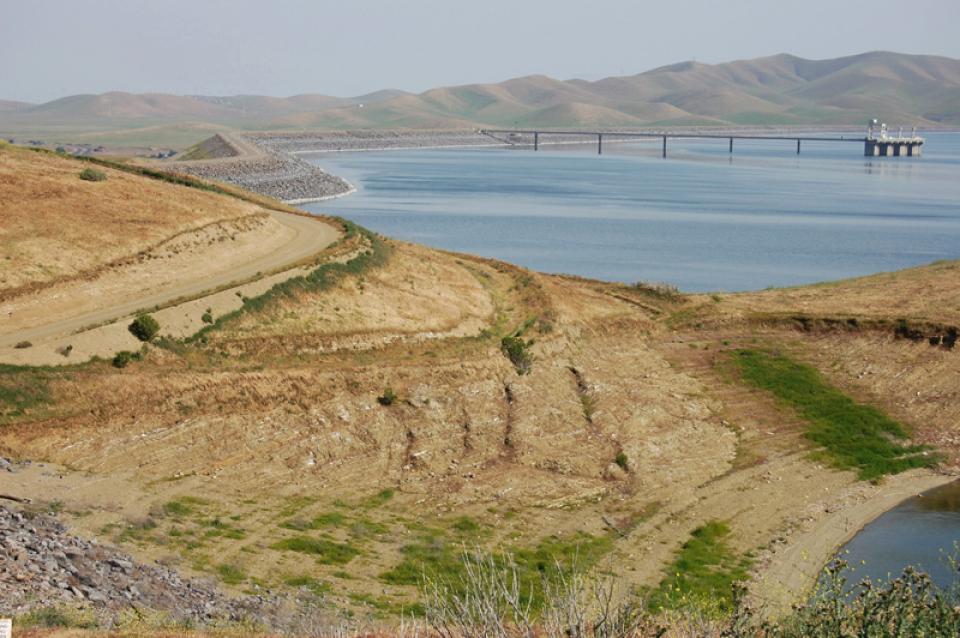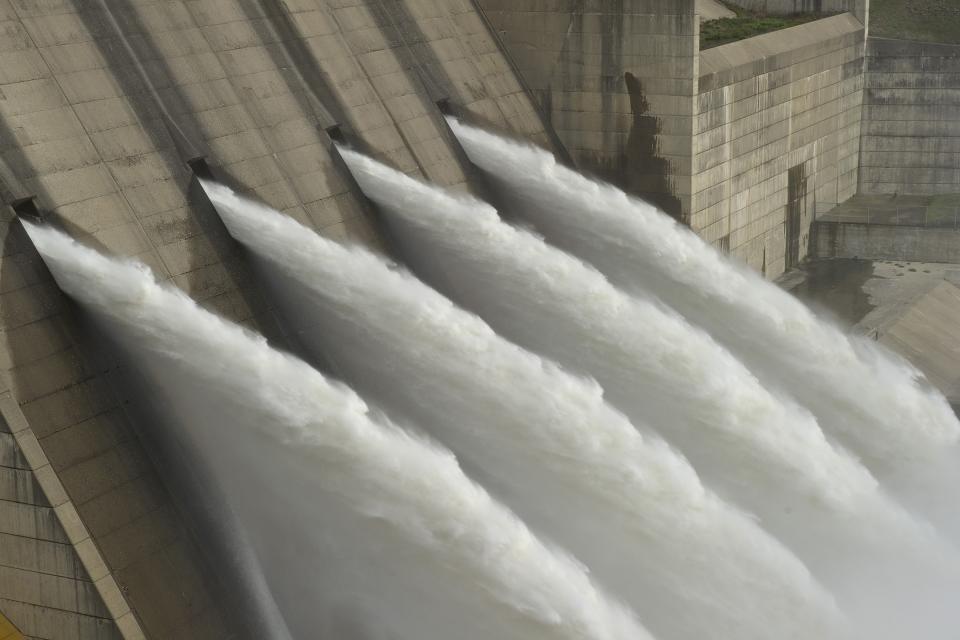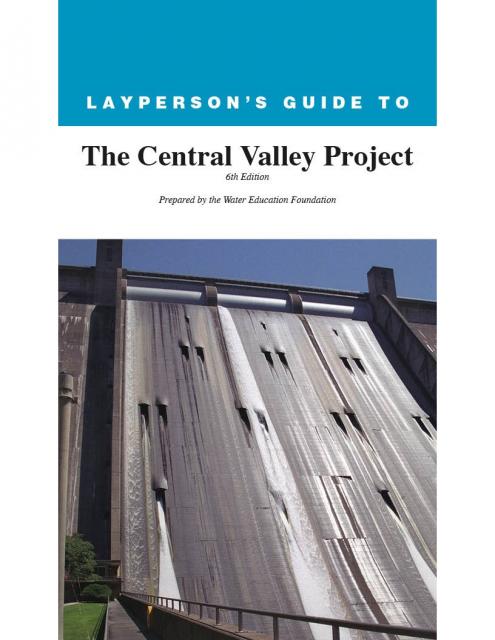San Luis Reservoir
The San Luis Reservoir is the nation’s largest off-stream reservoir, serving as a key water facility for both the State Water Project (SWP) and the federal Central Valley Project (CVP).
Impounded by the 382-foot-high, 3-mile long B.F. Sisk Dam, the reservoir 12 miles west of Los Banos can hold 2 million acre-feet of water. The federal Bureau of Reclamation built the dam and the California Department of Water Resources operates it. The state’s share of the reservoir water is about 55 percent.
Authorized in 1960 as part of the federal San Luis Unit project, the reservoir began operating in 1969, providing a variety of recreational activities and benefits to ish and wildlife.
The reservoir stores water that has traveled south from the Sacramento-San Joaquin Delta to the O’Neill Forebay via the California Aqueduct and CVP’s Delta-Mendota Canal.
The San Luis Canal, the federally built section of the California Aqueduct, starts at the forebay and runs 102 miles south to Kettleman City in Kings County. There, it connects with the state-built southern portion of the California Aqueduct, continuing to Southern California.
San Luis Reservoir provides additional flexibility to the state and federal water delivery systems by allowing for storage of excess winter and spring flows diverted from the Delta until the water is needed later in the year by SWP and CVP contractors.
About 30 percent of SWP water is delivered to San Joaquin Valley farms and cities via the California Aqueduct. The largest single customer in this area is the Kern County Water Agency, which buys up to 1 million acre-feet of water a year. Just south of Kettleman City, the Coastal Branch diverges from the main aqueduct to deliver water to Kern, Santa Barbara and San Luis Obispo counties.
San Luis Reservoir provides flexibility for both water projects. For instance, during periods of high runoff, usually in winter and spring, SWP operators pump water into storage at the reservoir for use during drier periods or may release water from Northern California’s Lake Oroville to make room for anticipated flood flows. Likewise, Reclamation stores excess water in San Luis for later use by farms, cities and wildlife refuges.
In 2023, the Department of the Interior and San Luis & Delta-Mendota Water Authority approved plans to raise Sisk Dam by 10 feet to create 130,000 acre-feet of additional water storage. The additional space created in San Luis Reservoir will be used to store water for delivery to south-of-Delta water contractors and wildlife refuges. The water will be used to meet existing contractual obligations and not serve any new demands.
An accompanying dam safety project is also underway to protect Sisk Dam from future earthquakes. Reclamation is adding stability berms and other safety features to the dam, which was built on an active fault.
In November 2024, the Interior Department’s Bureau of Reclamation announced it had completed its negotiations with the Water Authority on the dam-raising project. The $1 billion expansion is expected to be completed by 2032.
Updated November 2024












